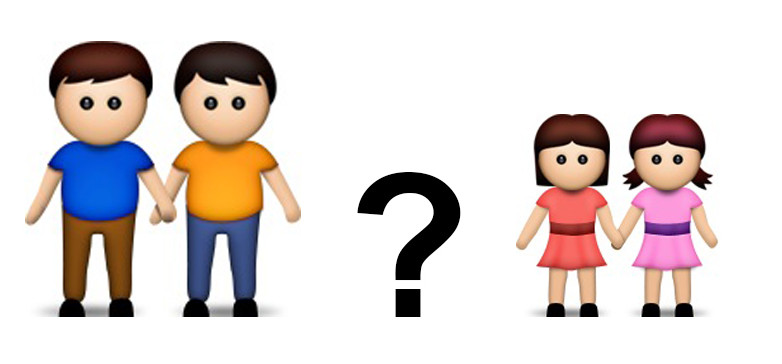I was out to dinner last night with a group of friends, with a large spectrum of sexual orientations: straight, gay, lesbian, and flexible. We got to talking about how it was often hard for women, trans people, or bisexuals in a relationship to be taken seriously, or to even be seen as “gay” by others. More often than not, most bars and clubs for the queer community cater to gay men with the off ladies night. Moreover, unless women look and or dress a certain way (like Ellen) they are often not considered “Gay Enough.” They become invisible and overlooked and even denied their relationship status by many people. How does this relate to Emoji?
Recently I decided it was time to make the Emoji Dictionary a fully fledged resource. I went the same route as Fred Benenson did with Emoji Dick and used Amazon’s Mechanical Turk tool for micro jobs. Basically hundreds of anonymous people spent a few days defining all the 846 Emoji featured on the Emoji Dictionary.
When I started poking around the site and the over 4000 definitions I had commissioned by an international workforce, something caught my eye. I looked at the definition for the two girls holding hands Emoji, there was no mention of them being gay or lesbian. Words like, “creepy girls, Girl Friends, two girls, women, and sisters” were used. The example sentences followed a similar tone: “Friendly girls hold hands to show affection.” and “Those girls holding hands are creeping me out.” So people were either seeing the Emoji as a symbol of sisterly love or it made them uncomfortable.

my opinion = It’s because the term GAY originally refers to an emotion usually attributed to women as if to say that women are GAY/HAPPY by nature and a male displaying this attribute is what was used the term the same way we use emojis to express ideas. Now if they had like a BUTCH emoji , with what is considered as natural to males, the point would be more easily conveyed. This as a very great and urgently relevant article. Keep up the good work and thanks for sharing.
It doesn’t mean happy anymore! People know what the heck that word means and I’m a man that like men that’s what it means! I am not heterosexual. STRAIGHT means lots of things not just HETEROSEXUAL!
My relationship is valid just like a heterosexual one. I like men and those emojis symbol it but you don’t want to believe it.
No, gay did not refer originally to a feeling, nor did happy to a feeling [but a state], but to a look which means flashy manner (as in nosegay or gay dress) where its opposite is coy, whose meaning was mostly forgotten in Victorian times and gave way to camp[y], then that meaning forgotten by WWI and gave way to swish[y]. But the expressions kept the meaning, like “acting all gay”.
Should emoji move onto waistgrabbing?
The size and style of the two examples makes a huge difference too. The girls holding hands look like kids (and creepy kids at that). The two males could at least be construed as adults. Even in your featured image at the top of this page, the girls are a whole head shorter.